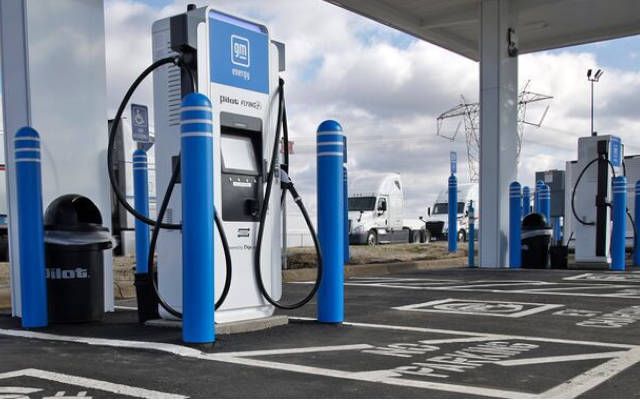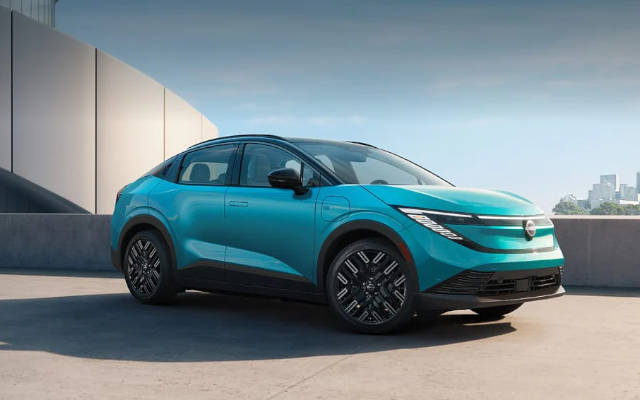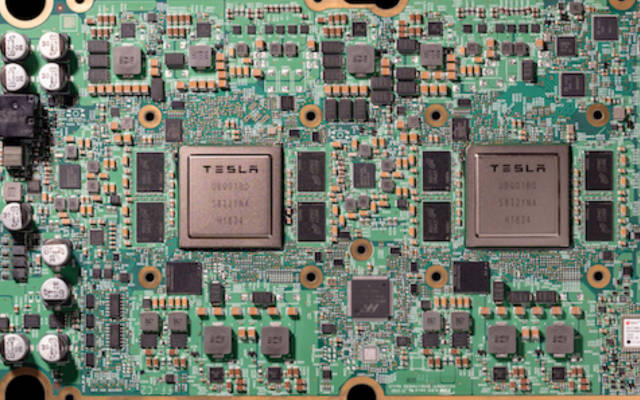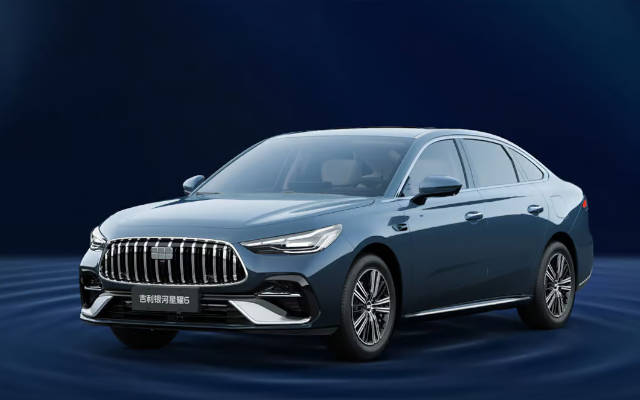 EDITOR'S PICK
EDITOR'S PICK
Nearly 70% Of The Miles Of The 10 Longest Interstates Is Now Within 10 miles Of A Fast EV Charger, But Range Anxiety Is Stuck In People's Heads
01 Nov 2025 | Synopsis
 Even though about 70 % of miles on the 10 longest U.S. interstates are now within 10 miles of a fast-charging station, range anxiety persists among EV drivers. This Fortune article explains that the feeling of running out of charge or being stuck without a charger remains a barrier - even as infrastructure expands - because it is partly psychological and tied to driver habits and perceptions.
Even though about 70 % of miles on the 10 longest U.S. interstates are now within 10 miles of a fast-charging station, range anxiety persists among EV drivers. This Fortune article explains that the feeling of running out of charge or being stuck without a charger remains a barrier - even as infrastructure expands - because it is partly psychological and tied to driver habits and perceptions.Why EVs Are About To Get Cheaper Than Gas Cars
01 Nov 2025 | Synopsis
 Several factors are converging to potentially make new electric vehicles (EVs) cheaper to purchase than gasoline cars, accelerating their adoption. Key drivers include significant drops in battery material costs, intense global competition, and increasing economies of scale which simplify EV production. This shift means EVs could soon be cheaper upfront and over time due to lower operating expenses, pressuring traditional automakers.
Several factors are converging to potentially make new electric vehicles (EVs) cheaper to purchase than gasoline cars, accelerating their adoption. Key drivers include significant drops in battery material costs, intense global competition, and increasing economies of scale which simplify EV production. This shift means EVs could soon be cheaper upfront and over time due to lower operating expenses, pressuring traditional automakers.Batteries Are Set To Surge Onto The US Grid
01 Nov 2025 | Synopsis
 BloombergNEF projects U.S. utility‑scale battery capacity will nearly triple by 2030, with 67 GW of new storage - about 284 GWh - coming online in five years. Batteries already help California cut gas use and Texas avoid grid emergencies. Growth is driven by rising solar, surging power demand, and supportive incentives, though community opposition and fire safety concerns remain hurdles.
BloombergNEF projects U.S. utility‑scale battery capacity will nearly triple by 2030, with 67 GW of new storage - about 284 GWh - coming online in five years. Batteries already help California cut gas use and Texas avoid grid emergencies. Growth is driven by rising solar, surging power demand, and supportive incentives, though community opposition and fire safety concerns remain hurdles.Elon Musk Proposes Idling Tesla EVS Could Create Massive 100-Million-Vehicle Strong 100 Gigawatts Distributed AI Computing Power Network
31 Oct 2025 | Synopsis
 Elon Musk proposed using idle Teslas as a vast distributed AI network. In a recent earnings call, he suggested that if 100 million cars each offered ~1 kW of inference compute while parked, they could collectively deliver ~100 gigawatts of distributed power - forming a massive global neural net. This vision turns Tesla's fleet into a decentralized supercomputer, blending mobility with AI infrastructure.
Elon Musk proposed using idle Teslas as a vast distributed AI network. In a recent earnings call, he suggested that if 100 million cars each offered ~1 kW of inference compute while parked, they could collectively deliver ~100 gigawatts of distributed power - forming a massive global neural net. This vision turns Tesla's fleet into a decentralized supercomputer, blending mobility with AI infrastructure.Plugin Hybrid Sedan For Less Than The Equivalent of $10K
31 Oct 2025 | Synopsis
 Geely Galaxy launched the Starshine 6 plugin hybrid sedan in China as an ultra-affordable family car to compete with BYD. The vehicle, which starts at approximately $9,670, features the Leishen AI Hybrid 2.0 system and a EV-range up to 125 km, offering a combined range of up to 1,700 km and low fuel consumption.
Geely Galaxy launched the Starshine 6 plugin hybrid sedan in China as an ultra-affordable family car to compete with BYD. The vehicle, which starts at approximately $9,670, features the Leishen AI Hybrid 2.0 system and a EV-range up to 125 km, offering a combined range of up to 1,700 km and low fuel consumption.
 EVWorld Exclusive
EVWorld Exclusive
Carbon Neutral Summit 2025 Preview - The Hard Questions Automakers Must Answer
01 Nov 2025 |  The EMEA Automotive Carbon Neutral Summit 2025 will confront the gap between ambition and execution. Automakers must scale low‑carbon technologies, decarbonize sprawling supply chains, and secure renewable energy for factories and charging networks. Executives will push for clear policy, carbon pricing, and stable investment signals. Circular economy practices and global competition add urgency. The challenge: make carbon neutrality practical, profitable, and fast enough to meet climate goals.
The EMEA Automotive Carbon Neutral Summit 2025 will confront the gap between ambition and execution. Automakers must scale low‑carbon technologies, decarbonize sprawling supply chains, and secure renewable energy for factories and charging networks. Executives will push for clear policy, carbon pricing, and stable investment signals. Circular economy practices and global competition add urgency. The challenge: make carbon neutrality practical, profitable, and fast enough to meet climate goals.
Can Food Waste Fuel America's Skies? The Promise And Pitfalls Of Trash-To-JetA
01 Nov 2025 |  Scientists are developing ways to turn America's massive food waste stream into sustainable aviation fuel. Using processes like hydrothermal liquefaction, discarded scraps can be converted into biocrude and refined into jet-ready fuel. At full scale, it could replace only a fraction of U.S. daily jet fuel demand, but it would cut landfill methane and diversify supply. Major hurdles remain: costly collection, dispersed feedstock, certification, and economics compared to fossil fuel.
Scientists are developing ways to turn America's massive food waste stream into sustainable aviation fuel. Using processes like hydrothermal liquefaction, discarded scraps can be converted into biocrude and refined into jet-ready fuel. At full scale, it could replace only a fraction of U.S. daily jet fuel demand, but it would cut landfill methane and diversify supply. Major hurdles remain: costly collection, dispersed feedstock, certification, and economics compared to fossil fuel.
Can Coal Power the AI Boom? Wyoming's Bet on a Fading Fuel
01 Nov 2025 |  Wyoming's coal is being promoted as vital for powering the AI boom, but the market reality tells another story. Utilities continue retiring coal plants as cheaper wind, solar, and natural gas dominate. Lease auctions draw little interest, and even China is pairing coal with massive renewable growth. Analysts warn AI demand may be overstated, leaving coal an expensive detour. The conclusion: coal is unlikely to fuel America's AI future.
Wyoming's coal is being promoted as vital for powering the AI boom, but the market reality tells another story. Utilities continue retiring coal plants as cheaper wind, solar, and natural gas dominate. Lease auctions draw little interest, and even China is pairing coal with massive renewable growth. Analysts warn AI demand may be overstated, leaving coal an expensive detour. The conclusion: coal is unlikely to fuel America's AI future.
America's Untapped Power: Why Wave Energy Still Waits For Its Moment
01 Nov 2025 |  America's waves hold vast untapped energy - enough to power over half the nation's electricity needs. Yet wave power lags behind solar and wind. Devices must survive corrosive seas and violent storms, while no single design has emerged as dominant. Developers also face years of regulatory hurdles and high costs that deter investors. New test sites like Oregon's PacWave aim to prove the technology, offering hope that wave energy can finally move from promise to reality.
America's waves hold vast untapped energy - enough to power over half the nation's electricity needs. Yet wave power lags behind solar and wind. Devices must survive corrosive seas and violent storms, while no single design has emerged as dominant. Developers also face years of regulatory hurdles and high costs that deter investors. New test sites like Oregon's PacWave aim to prove the technology, offering hope that wave energy can finally move from promise to reality.
Battle of the Boxes: Tokyo's Compact EV Showdown
30 Oct 2025 |  Three boxy EVs - BYD Racco, Nissan Sakura, and Honda Super-One - dominated the 2025 Tokyo Auto Show, each embracing Japan's kei car tradition with electric innovation. BYD eyes global markets, while Sakura and Super-One remain Japan-focused. U.S. entry would require upgrades in safety, speed, and tech. Their compact charm and urban utility signal a strategic shift in EV design - away from sleek sameness and toward character-driven mobility.
Three boxy EVs - BYD Racco, Nissan Sakura, and Honda Super-One - dominated the 2025 Tokyo Auto Show, each embracing Japan's kei car tradition with electric innovation. BYD eyes global markets, while Sakura and Super-One remain Japan-focused. U.S. entry would require upgrades in safety, speed, and tech. Their compact charm and urban utility signal a strategic shift in EV design - away from sleek sameness and toward character-driven mobility.
 01 Nov 2025 23:29:20 UTC |
RECENT PODCASTS
Tesla RoboTaxis Crash More Than Waymo - 35,000 Rivian Amazon Vans
SEARCH RSSTREAM
 61 New Postings In Past 24 Hours
61 New Postings In Past 24 Hours
Category:energy
Region:NoAmerica
Date:01 Nov 2025
Category:mobility
Region:NoAmerica
Date:01 Nov 2025
Category:energy
Region:NoAmerica
Date:01 Nov 2025
Category:mobility
Region:AsiaPacific
Date:01 Nov 2025
Category:finance
Region:Europe
Date:01 Nov 2025
Category:mobility
Region:NoAmerica
Date:01 Nov 2025
Category:mobility
Region:NoAmerica
Date:01 Nov 2025
Category:review
Region:AsiaPacific
Date:01 Nov 2025
Category:mobility
Region:NoAmerica
Date:01 Nov 2025
Category:mobility
Region:AsiaPacific
Date:01 Nov 2025
Category:policy
Region:NoAmerica
Date:01 Nov 2025
Category:policy
Region:Global
Date:01 Nov 2025
Category:policy
Region:Global
Date:01 Nov 2025
Category:energy
Region:NoAmerica
Date:01 Nov 2025
Category:policy
Region:Europe
Date:01 Nov 2025
Category:policy
Region:AsiaPacific
Date:01 Nov 2025
Category:policy
Region:IndoAsia
Date:01 Nov 2025
Category:mobility
Region:Europe
Date:01 Nov 2025
Category:policy
Region:AsiaPacific
Date:01 Nov 2025
Category:mobility
Region:AsiaPacific
Date:01 Nov 2025